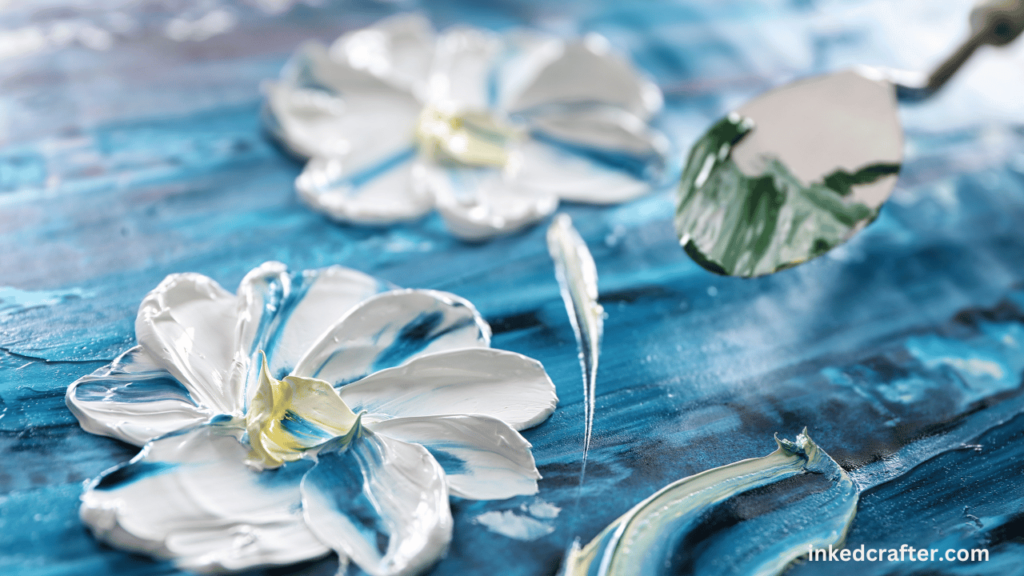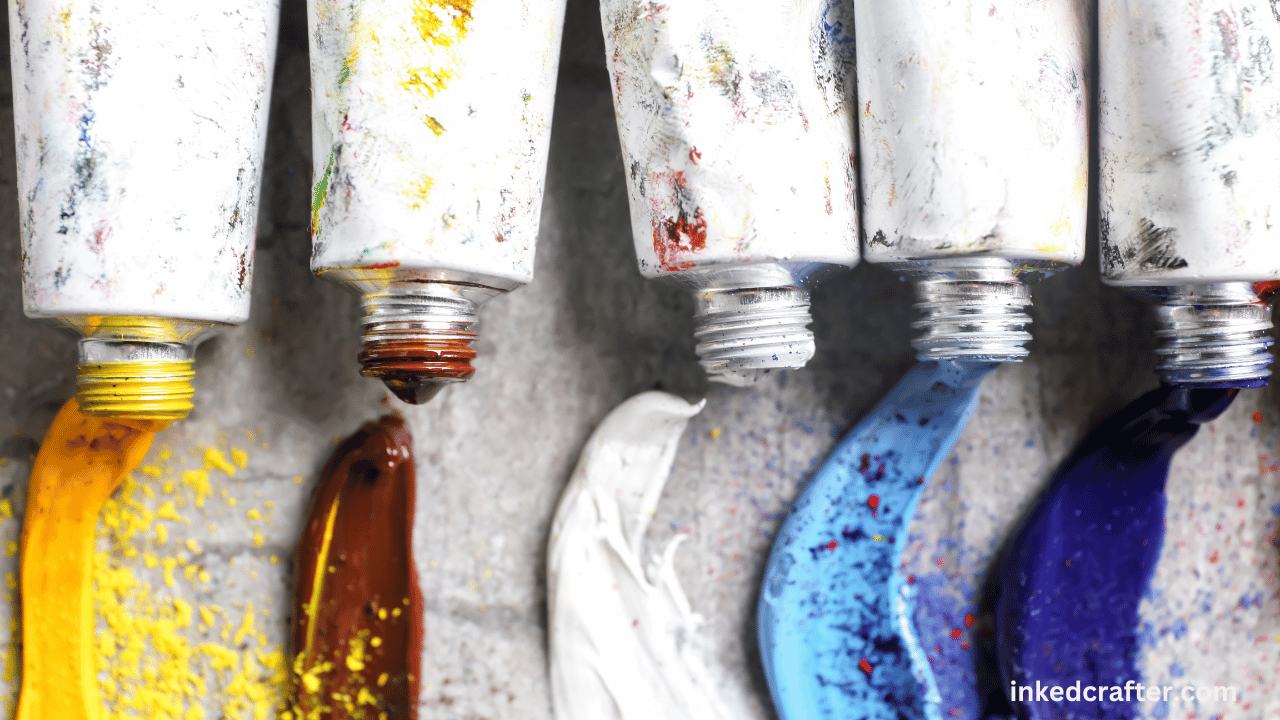Oil and acrylic painting are two popular mediums used by artists all over the world. However, there seems to be a pervasive myth surrounding the toxicity of these paints. Many people believe that they are harmful to the environment, the artist, and those around them.
One common misconception is that oil and acrylic paints emit harmful fumes that can be dangerous to inhale. While it is true that some paints contain solvents that can release toxic fumes, modern oil and acrylic paints are generally safe when used in a well-ventilated area.
The key is to use high-quality paints that contain fewer harmful chemicals and to take common sense precautions, such as wearing a mask and gloves when painting.Another myth is that oil and acrylic paints are harmful to the environment.
While it is important to properly dispose of any unused paint and cleaning materials, most oil and acrylic paints are non-toxic and can be safely used without causing harm to the environment. By debunking these myths, we hope to empower artists to continue creating beautiful works of art without fear of toxicity.
Oil and acrylic painting are popular mediums among artists, but concerns about toxicity have led to myths surrounding the safety of these art forms. In this comprehensive guide, we will debunk these myths and provide insights into using oil and acrylic paints in a safe and responsible manner.

Contents
- 1 Understanding Oil Paint
- 2 Importance of Varnish in Painting
- 3 Exploring Pigments in Art
- 4 Understanding Solvents and Mediums
- 5 Transitioning to Acrylic: a Non-Toxic Alternative
- 6 Conclusion
- 7 FAQs
- 8 Q: What are some common myths about toxicity in oil and acrylic painting?
- 9 Q: Is it true that all oil paints contain heavy metals and are toxic?
- 10 Q: How can I paint with oil without exposing myself to toxic chemicals?
- 11 Q: Are acrylic paints safer to use compared to oil paints?
- 12 Q: Can I still achieve vibrant colors in my artwork without using cadmium paint?
- 13 Q: How can I safely clean my brushes and maintain a non-toxic painting environment?
- 14 Q: What precautions should I take to avoid inhalation of toxic fumes while painting with oil?
Understanding Oil Paint
Oil paint is a versatile medium consisting of pigment particles suspended in a drying oil, typically linseed oil. The composition of oil paint allows for smooth blending and rich color saturation, making it a favorite among painters.
Toxicity Concerns in Oil Paint
While oil paint is generally safe to work with, some pigments used in oil paints contain heavy metals like cadmium and cobalt, which can be toxic if inhaled or ingested. Proper handling and disposal of oil paint materials are crucial to minimizing health risks.
Alternatives to Toxic Oil Paint
To mitigate toxicity concerns, artists can opt for non-toxic oil paints that use safer pigments and solvents. Walnut oil and vegetable oil-based paints are excellent alternatives that offer comparable results without the health hazards associated with traditional oil paints.
Importance of Varnish in Painting
Varnish plays a vital role in protecting and preserving paintings by providing a clear, protective layer over the painted surface. It enhances color vibrancy and adds a professional finish to artworks.
Types of Varnish
Artists can choose between matte, satin, and gloss varnishes based on their preferred finish. Each type of varnish offers unique visual effects and protective qualities to the painting.
Effects of Varnish on Toxicity
Traditional varnishes may contain toxic solvents that emit fumes harmful to health. Opting for non-toxic varnish options can help reduce exposure to hazardous chemicals and create a safer painting environment for artists.
Non-Toxic Varnish Options
Water-based varnishes and acrylic-based varnishes are non-toxic alternatives that provide effective protection for paintings without compromising on quality. These eco-friendly varnishes are easy to apply and offer long-lasting results.
Exploring Pigments in Art
Pigments are colorants used in art materials to create different hues and tones. While pigments are essential for painting, some contain toxic substances that pose health risks if not handled properly.
Toxic Pigments to Avoid
Pigments containing heavy metals like cadmium and lead white should be avoided due to their harmful effects on health. Artists should carefully read labels and choose safer alternatives to protect themselves and the environment.
Safe Pigment Choices
Opting for non-toxic pigments derived from natural sources or synthetic alternatives can minimize the risk of exposure to hazardous substances. Pigments made from organic materials or water-soluble pigments offer vibrant colors without compromising safety.
Using Pigments Responsibly
Artists should handle pigments with caution, wear gloves when necessary, and avoid inhaling pigment dust. Proper ventilation in the workspace and regular cleaning of brushes and painting tools can further reduce the risk of toxicity associated with pigments.

Understanding Solvents and Mediums
Solvents and mediums are essential components in painting that help artists achieve desired effects and workability with their chosen materials. However, some traditional solvents contain toxic substances that can pose health risks if not used properly.
Toxicity of Traditional Solvents
Solvents like turpentine and paint thinners emit fumes that can be harmful when inhaled, leading to respiratory issues and other health concerns. Artists should use these solvents in well-ventilated areas and follow safety guidelines to minimize exposure.
Non-Toxic Medium Alternatives
Non-toxic mediums such as Gamsol and Gamblin solvent alternatives offer safer options for thinning oil paints and cleaning brushes. These odorless solvents are gentle on the environment and provide effective results without the associated health risks.
Guidelines for Safer Use of Solvents
Artists should prioritize safety when using solvents by wearing protective gear like gloves and aprons, working in well-ventilated spaces, and avoiding direct skin contact with toxic materials. Proper disposal of solvent waste is also crucial for maintaining a safe painting environment.
Transitioning to Acrylic: a Non-Toxic Alternative
For artists concerned about the toxicity of oil paints, transitioning to acrylic painting offers a non-toxic alternative that delivers similar visual effects and versatility in application. Acrylic paints are water-based and dry quickly, making them ideal for artists seeking a safer painting experience.
Comparison between Oil, Acrylic, and Watercolor
Each painting medium offers unique characteristics and advantages. While oil paints are known for their depth of color and blendability, acrylic paints provide fast drying times and easy clean-up. Watercolors offer transparency and luminosity, making them suitable for delicate washes.
Benefits of Acrylic for Toxicity Concerns
Acrylic paints are considered non-toxic and do not contain the harmful substances found in some oil paints. Artists can enjoy painting with acrylics without worrying about health risks associated with toxic pigments and solvents, making it an ideal choice for artists seeking a safer painting practice.
Techniques for Using Acrylic in Painting
Artists can explore various techniques with acrylic paints, including layering, blending, and texture creation. Acrylic mediums offer artists the flexibility to experiment with different effects while maintaining adherence to non-toxic practices in painting.
Conclusion
It’s important to recognize that while oil and acrylic paints contain chemicals that may be harmful if not used properly, the notion of them being inherently toxic is often exaggerated or misunderstood. Through proper ventilation, personal protective equipment, and adherence to safety guidelines, artists can minimize any potential risks associated with these mediums.
Furthermore, advancements in paint formulations and the availability of non-toxic alternatives have significantly reduced the health hazards traditionally associated with oil and acrylic painting. Many artists today have access to water-based acrylics and solvent-free oil paints that offer vibrant colors and excellent performance without compromising on safety.
By debunking the myths surrounding the toxicity of oil and acrylic paints and promoting responsible use and handling practices, artists can enjoy the creative freedom these mediums provide without compromising their health or the environment.
In essence, while it’s essential to be aware of potential risks, it’s equally important not to let fear overshadow the joy and fulfillment that comes from expressing oneself through painting. With proper knowledge, precautions, and a commitment to safe practices, artists can continue to explore and experiment with oil and acrylic paints with confidence and peace of mind.
FAQs
Q: What are some common myths about toxicity in oil and acrylic painting?
A: Common myths include the belief that all oil paints are toxic, that using baby oil or vegetable oil is safe, and that oil paints are only toxic if ingested.
Q: Is it true that all oil paints contain heavy metals and are toxic?
A: Not all oil paints contain heavy metals, and toxicity levels can vary depending on the pigments used. It is important to be aware of the specific pigments in your paints to understand their toxicity levels.
Q: How can I paint with oil without exposing myself to toxic chemicals?
A: You can paint with non-toxic oil paints and use safer alternatives to traditional toxic solvents, such as water-soluble oils or natural drying oils like linseed or walnut oil.
Q: Are acrylic paints safer to use compared to oil paints?
A: Acrylic paints are generally considered to be less toxic than oil paints, as they do not contain the same levels of harmful chemicals found in some oil paint pigments.
Q: Can I still achieve vibrant colors in my artwork without using cadmium paint?
A: Yes, there are non-toxic alternatives to cadmium paints that can still provide vibrant colors in your paintings, such as organic pigments or cadmium-free hues.
Q: How can I safely clean my brushes and maintain a non-toxic painting environment?
A: You can use natural brush cleaners or solvents like safflower oil or odorless mineral spirits to clean your brushes without exposing yourself to harmful chemicals.
Q: What precautions should I take to avoid inhalation of toxic fumes while painting with oil?
A: It is important to work in a well-ventilated area, use a respirator mask if necessary, and avoid inhaling fumes from oil paints, solvents, or mediums to reduce the risk of exposure.







